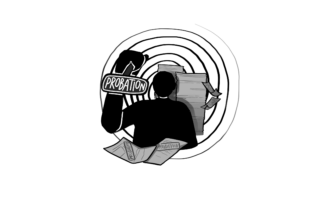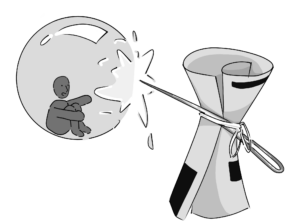Despite being titled “Modern World History,” Aragon’s underclassmen history courses focus too much on Western societies and their ideals, rather than covering the entire world. This central view on Europe, known as eurocentrism, becomes detrimental to students’ learning because it presents a singular viewpoint of history and creates an implicit bias that Western cultures and countries are more important than the rest of the world.
Our curriculum teaches historical events from the outlook of the West, inevitably creating biased views. Without diving into a variety of different countries and exploring their unique cultures and perspectives, students only become ignorant as they stray away from understanding differences that are present across the world. Now more than ever, regions outside of Western society have been increasingly relevant — the Middle East is in the news almost everyday, and China is the second largest economy in the world, yet neither region gets the coverage in history classes that they deserve.
While the California framework for World History includes content regarding countries, like India and South Africa, the content is mostly discussed through the lens of British imperialism and Western culture’s effect on those countries.
In order to equally promote all parts of the world, it’s necessary to detail occurrences throughout and not just highlight achievements and involvements of the West. For example, World War II coverage often focuses on the European front of the war, while the Pacific front has just as much complex history.
While teachers recognize that eurocentrism could be an issue, they hope to gradually expose students to other continents later on in the Contemporary World Studies (CWS) course.
Although worldwide views are addressed in CWS, it’s important that more countries are represented in a course that has “World” in its title. CWS focuses largely on recent history and current events. However, MWH doesn’t give students a complete view of how countries have evolved and developed, which is essential for understanding the current events covered in CWS. Furthermore, as America becomes more diverse than ever, students from all backgrounds should be able to see their own history and culture in the curriculum. Our school can acknowledge this by incorporating several country-specific units throughout the year so that students can delve into and recognize each country’s unique history.
Some Aragon classes have implemented new Global Awareness units into their course, taking a step forward in broadening the diversity of countries that are covered. However, merely cramming underrepresented countries into one unit doesn’t do them justice, and still results in an implicit bias towards the Western cultures covered throughout the rest of the class.
Aragon’s Modern World History curriculum revolves around European and American cultures too much — the courses ought to be revised so that students can grasp a complete understanding of the entire world and global cultures, and not just see it through a single eurocentric lens.





